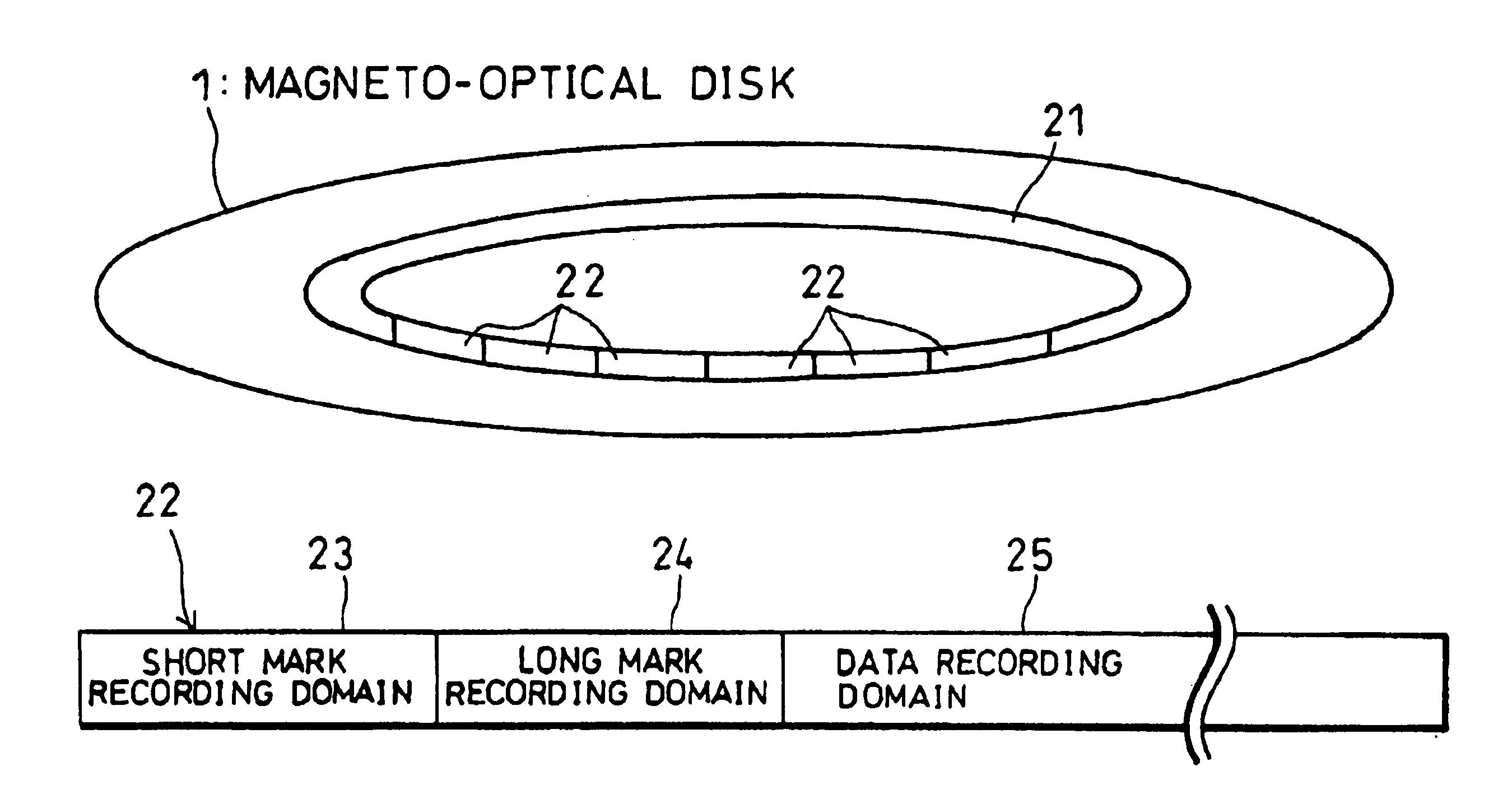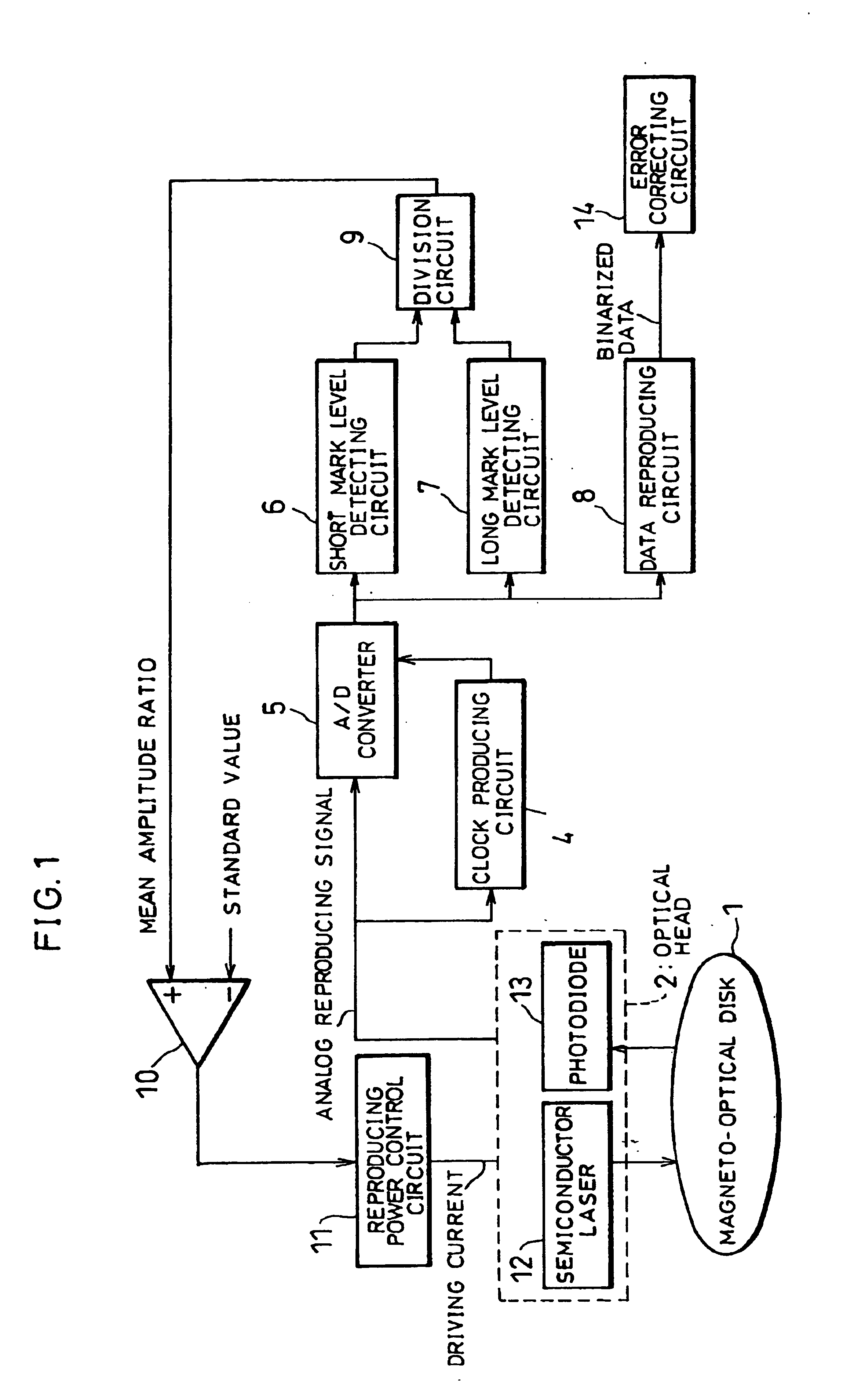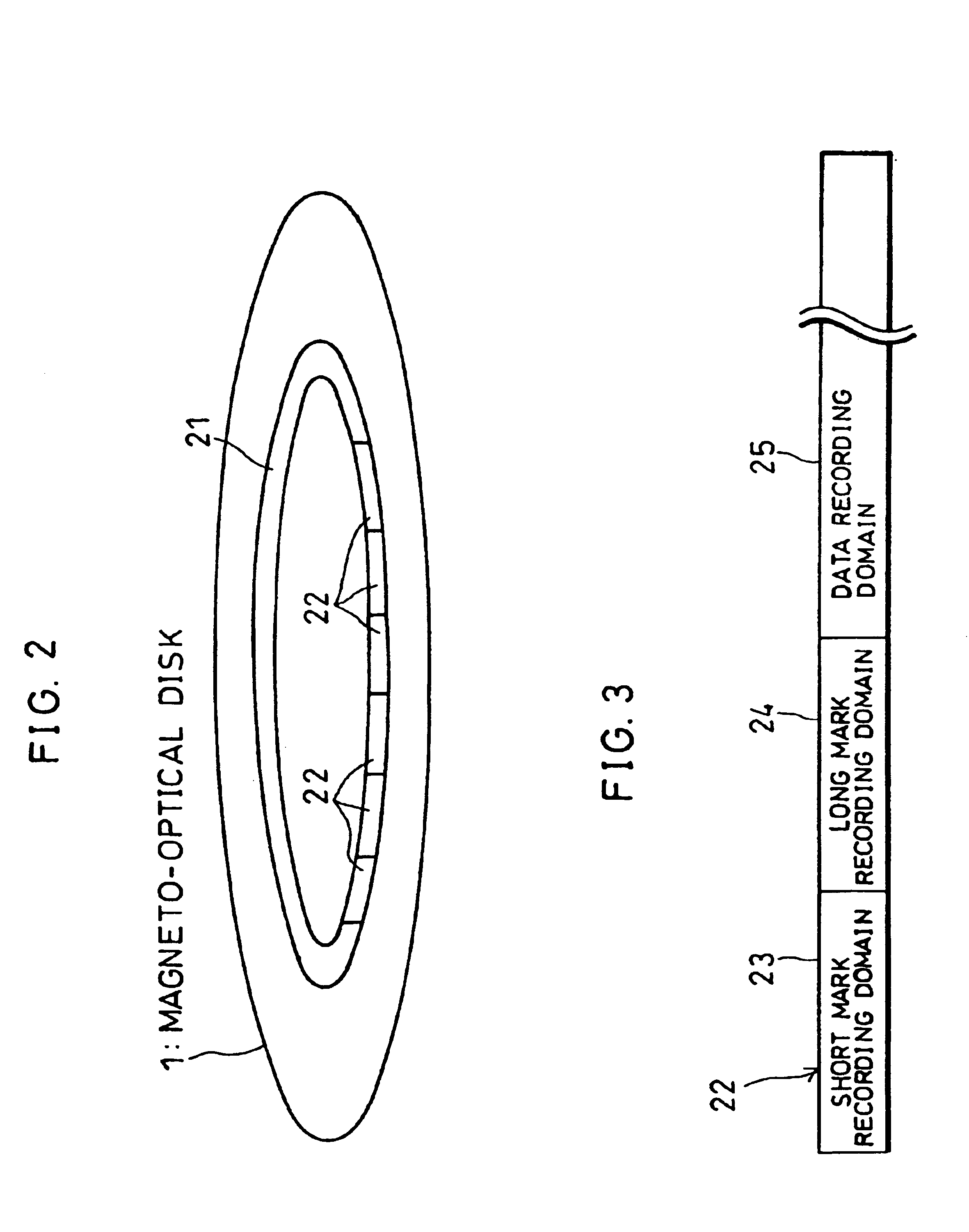Optical reproducing device and optical memory medium
a reproducing device and optical memory technology, applied in the field of optical reproducing devices and optical memory media, can solve the problems of increasing the proportion of noise signals included in the reproduced data, increasing the probability of reading errors, and too large aperture formed on the magneto-optical disk
- Summary
- Abstract
- Description
- Claims
- Application Information
AI Technical Summary
Benefits of technology
Problems solved by technology
Method used
Image
Examples
first embodiment
[First Embodiment]
The first embodiment of the present invention will be explained below.
FIG. 1 is an explanatory drawing showing the structure of a magnetic ultra high resolution optical reproducing device (hereinafter referred to as “the present reproducing device”). As shown in the Figure, the present reproducing device is made up of an optical head 2, a clock producing circuit 4, an A / D converter 5, a short mark level detecting circuit 6, a long mark level detecting circuit 7, a data reproducing circuit 8, a division circuit 9, a differential amplifier 10, a reproducing power control circuit 11, and an error correcting circuit 14. Further, the magneto-optical disk 1 shown in FIG. 1 is an optical memory medium to be reproduced by the present reproducing device.
Prior to explaining the structure of the present reproducing device, the structure of the magneto-optical disk 1 will first be explained. In the magneto-optical disk 1 various data is recorded by (1,7)RLL (Run Length Limited...
second embodiment
[Second Embodiment]
The second embodiment of the present invention will be explained below.
FIG. 19 is an explanatory drawing showing the structure of a magnetic ultra high resolution optical reproducing device (hereinafter referred to as “the present reproducing device”). As shown in the Figure, the present reproducing device is made up of an optical head 62, an identification data reproducing circuit 64, a first clock producing circuit 65, a second clock producing circuit 66, a clock selecting circuit 67, an A / D converter 68, a PRML demodulating circuit 69, an amplitude ratio detecting circuit 70, a differential amplifier 71, and a reproducing power control circuit 72. Further, the magneto-optical disk 61 shown in FIG. 19 is an optical memory medium to be reproduced by the present reproducing device.
First, the structure of the magneto-optical disk 61 will be explained. The magneto-optical disk 61 is provided with a reproducing layer and a recording layer, and is a magnetic ultra hig...
third embodiment
[Third Embodiment]
The following will explain the third embodiment of the present invention. Members having functions equivalent to those of the second embodiment above will be given the same reference symbols, and explanation thereof will be omitted.
FIG. 26 is an explanatory drawing showing the structure of an optical reproducing device according to the present embodiment (hereinafter the “present reproducing device”). As shown in the Figure, instead of the identification data reproducing circuit 64, the first clock producing circuit 65, the second clock producing circuit 66, the clock selecting circuit 67, the A / D converter 68, and the amplitude ratio detecting circuit 70 of the optical reproducing device according to the second embodiment above, the present reproducing device is provided with a doubled clock producing circuit 101, an A / D converter 102, a signal separating circuit 103, a long / short mark extracting circuit 104, and an amplitude ratio detecting circuit 105.
Further, t...
PUM
| Property | Measurement | Unit |
|---|---|---|
| power | aaaaa | aaaaa |
| power | aaaaa | aaaaa |
| length | aaaaa | aaaaa |
Abstract
Description
Claims
Application Information
 Login to View More
Login to View More - R&D
- Intellectual Property
- Life Sciences
- Materials
- Tech Scout
- Unparalleled Data Quality
- Higher Quality Content
- 60% Fewer Hallucinations
Browse by: Latest US Patents, China's latest patents, Technical Efficacy Thesaurus, Application Domain, Technology Topic, Popular Technical Reports.
© 2025 PatSnap. All rights reserved.Legal|Privacy policy|Modern Slavery Act Transparency Statement|Sitemap|About US| Contact US: help@patsnap.com



